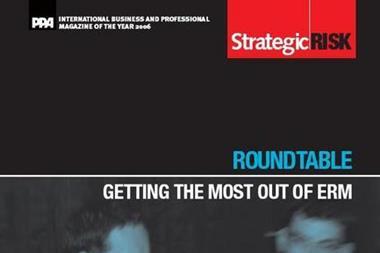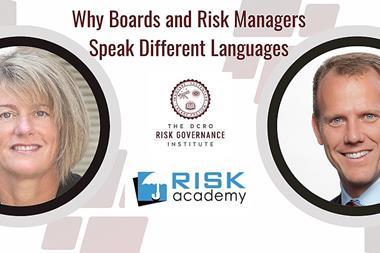Recent research suggests companies are still not getting the message about ERM
Recent findings from two of the big three brokers suggest that enterprise risk management (ERM), a strategic method of understanding and managing risk, has yet to become embedded in most companies day-to-day activities.
Despite progress in some sectors ERM is not being integrated into corporate cultures, said research released on Wednesday (November 14) by The Conference Board, and sponsored by risk consultancy Oliver Wyman, a Marsh company.
The results neatly coincide with a report released yesterday (November 15) by Aon Global Risk Consulting, which suggested many companies could be doing more to address and mitigate enterprise-wide risks.
Only one in ten companies in the Americas and Europe has fully integrated an ERM strategy, said the research from Aon.
Paul Hopkin, technical director, AIRMIC wonders whether organisations are sufficiently convinced of the bottom line benefits of ERM, he said: ‘The challenge is to quantify the benefits of ERM and to demonstrate that it helps deliver better projects and enhanced performance.’
Participants in a recent StrategicRISK roundtable discussion, called Getting the most out of ERM, saw ERM as enhancing value creation, providing both a competitive edge and also some important strategic input to decision making. But a paramount consideration that emerged through the whole discussion was the need to tackle the cultural issues.
AIRMIC is currently conducting in-depth research into the value of ERM and bringing together a number of different case studies, commenting on the research, Hopkin said: ‘We are looking at organisations that have explicitly launched ERM more than 3 years ago, but regrettably there are not a great deal of organisations in that situation.’
Participants in the project include Royal Mail, Metropolitan Police, Liverpool John Moores University, the Highways Agency and Nestle. The findings are expected by early 2008.
In the run-up to the EU’s Solvency II project—which aims to bring regulatory capital requirements at insurance companies more in line with their true risks—insurers have shown a greater interest in establishing ERM systems.
‘The winners of the future will be those companies that embrace ERM and create value through better risk-based decision making,’ said Jonathan Titman, P&C practice leader, Europe, Tillinghast a business of Towers Perrin.
‘Marrying corporate culture with ERM increases the likelihood programmes will be effective,’ added Aon in its release.
Hopkin said: ‘If you take the overall approach then you can integrate risk management broadly throughout the firm and from that point it’s possible to reap benefits. Unfortunately it is probably the case that ERM is not being sufficiently integrated into corporate cultures and processes.’
Mindsets prohibit adoption more than financial considerations, noted Hopkin: ‘In my experience, ERM can bring benefits. But the challenge is to embed the approach throughout the culture of the entire organisation, rather than adopting it just because it is mandated by Government or regulators.’
















